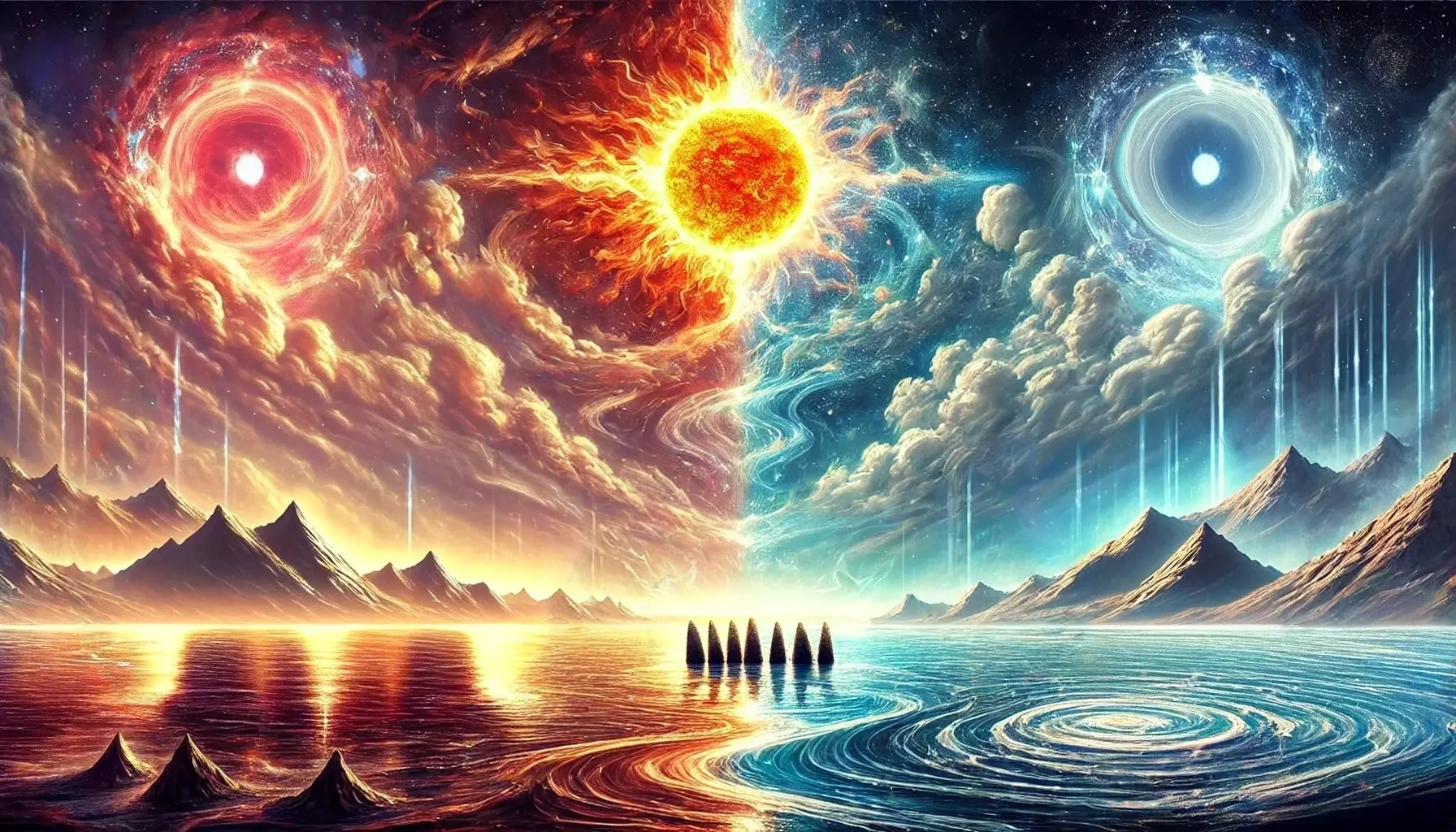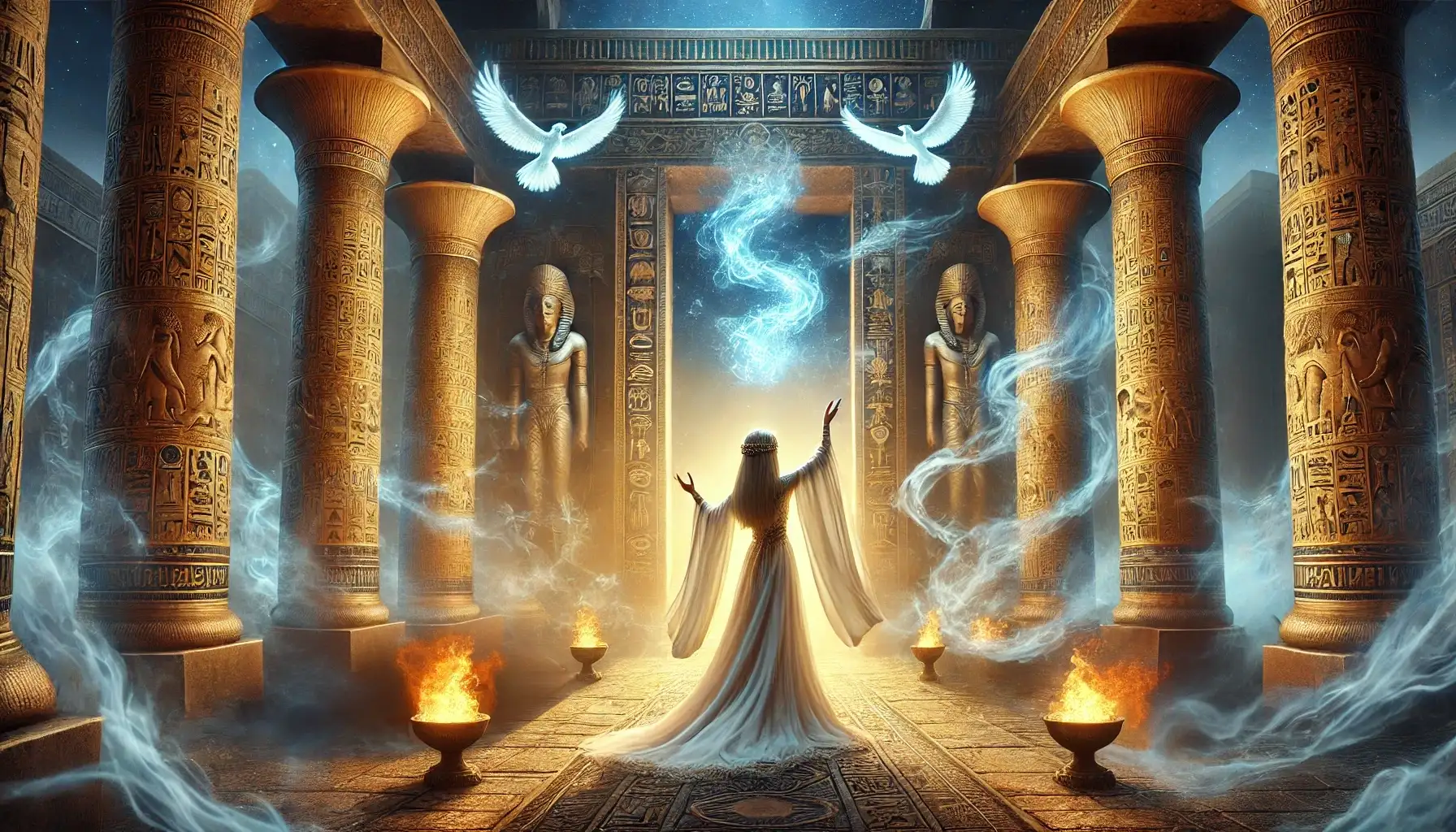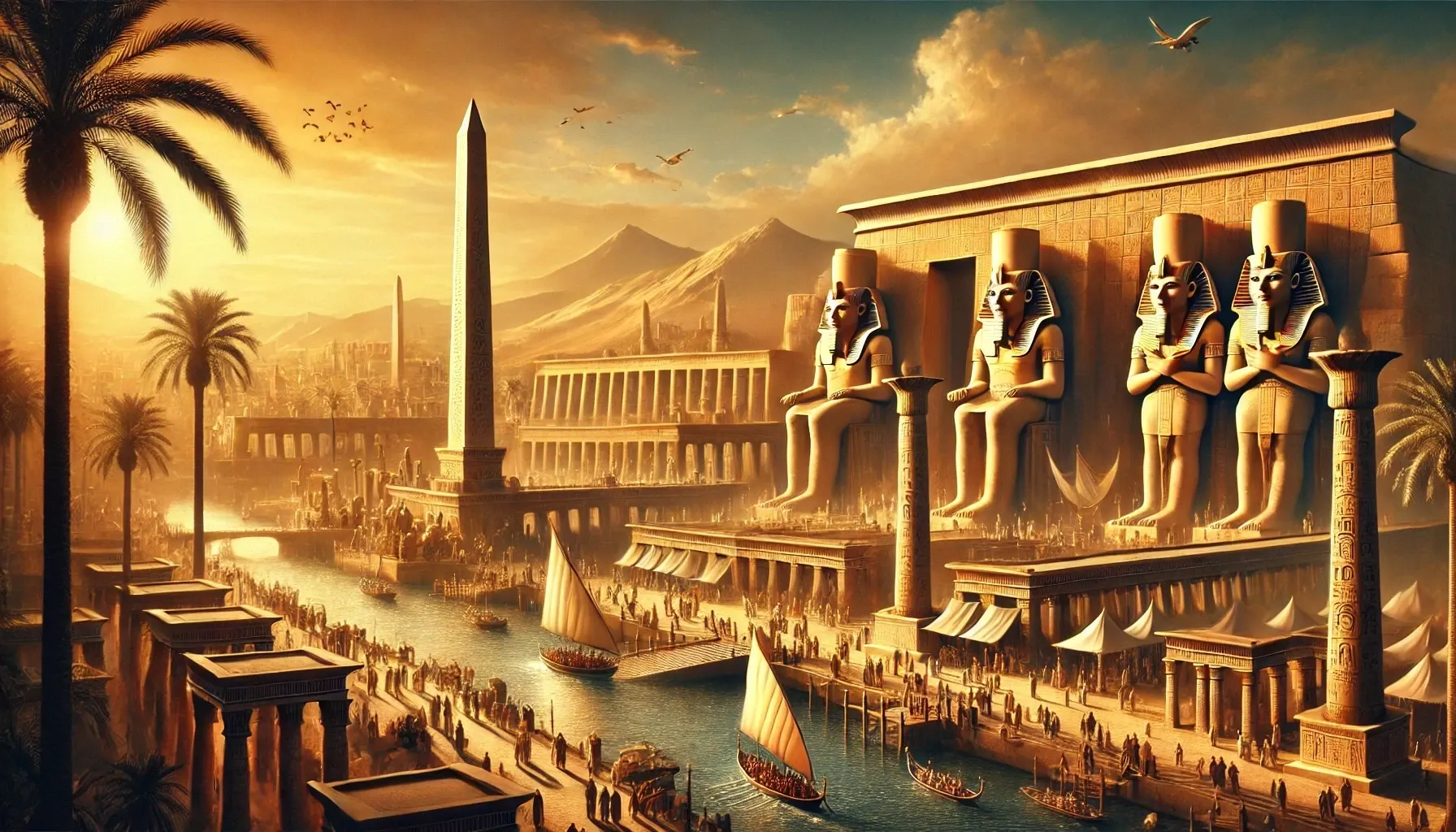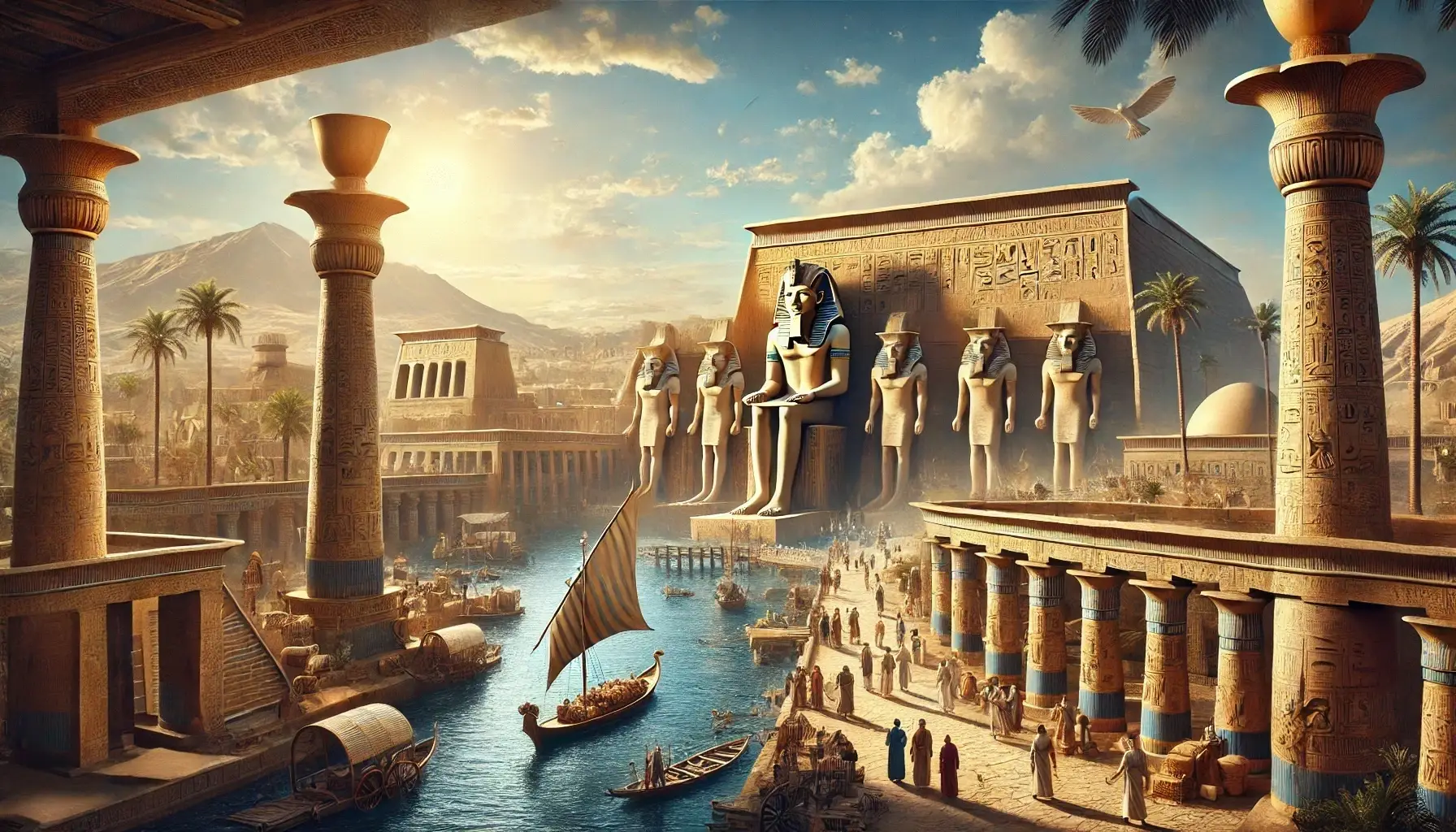The rich mythology of ancient Egypt extends far beyond its creation stories. The primordial myths offer profound insights into the nature of the cosmos, the divine, and humanity’s place within this intricate framework. In this article, we explore seven captivating primordial myths, separating those featuring Ra, the sun god, from those that do not.

1. The Creation of the Sun and Moon
Origin and Overview
This myth explains the origins of the celestial bodies that govern day and night. Ra, the sun god, emerges daily to illuminate the world, while the moon takes over in his absence. In some accounts, the moon is seen as the eye of Ra, temporarily removed to balance light and darkness.
The Story
Ra’s journey through the sky brings light to the world, while the moon offers illumination during his nightly absence. The interplay between the two celestial bodies represents the balance of power between day and night.
Symbolism
This myth highlights the cyclical nature of time and the balance inherent in the universe. It emphasizes the sun’s vital role in sustaining life and the interconnectedness of celestial forces.

2. Ra’s Journey Across the Sky
Origin and Overview
One of the most iconic Egyptian myths, this story follows Ra’s daily voyage across the heavens in his solar barque. The journey is both a symbol of life’s renewal and the cosmic battle between order and chaos.
The Story
Ra traverses the sky during the day, bringing light and life. At night, he descends into the underworld, where he confronts Apophis, the serpent of chaos. His triumph ensures the sunrise and the continuation of life.
Symbolism
Ra’s journey embodies the eternal struggle between Ma’at (order) and Isfet (chaos). It also reflects the resilience of life and the constant renewal of energy and light.

3. The Tears of Ra
Origin and Overview
This myth recounts the creation of humanity through Ra’s divine tears. It connects the sun god’s emotions to the existence of human life.
The Story
As Ra gazes upon the world, his tears fall to the earth and transform into humans. This act signifies a divine bond between the gods and humanity.
Symbolism
The Tears of Ra highlight humanity’s sacred origins and the gods’ responsibility for their well-being. It also underscores the emotional depth of Ra as a deity.

4. The Return of the Distant Goddess
Origin and Overview
This myth tells of the fiery goddess Sekhmet, sent by Ra to punish humanity, and her eventual pacification. It reflects the themes of divine wrath and mercy.
The Story
Sekhmet’s rampage nearly destroys humanity, but Ra tricks her into drinking red-dyed beer, which she mistakes for blood. Her rage subsides, and balance is restored.
Symbolism
The story illustrates the duality of destruction and mercy. Sekhmet’s transformation from a vengeful force to a calm protector symbolizes the balance necessary for cosmic harmony.

5. The Search for Shu and Tefnut
Origin and Overview
This myth describes Atum’s efforts to reunite with his lost children, Shu and Tefnut, who became separated in the primordial waters of Nun.
The Story
Atum creates an eye to search for Shu and Tefnut. When they are found, Atum sheds tears of joy, which result in the creation of humans. The reunion restores harmony to the cosmos.
Symbolism
This tale emphasizes the importance of family, connection, and the restoration of balance. It also underscores the divine origins of humanity.

6. The Separation of Earth and Sky
Origin and Overview
This myth explains how Shu, the god of air, separated Geb (earth) and Nut (sky) to create space for life to flourish.
The Story
Initially locked in a tight embrace, Geb and Nut are forced apart by Shu. Their separation creates the physical world, with the sky above and the earth below.
Symbolism
The act of separation represents the establishment of order and the boundaries necessary for creation. It also reflects the dynamic interplay between opposing forces.

7. The Primordial Waters
Origin and Overview
Before creation, the universe existed as an infinite expanse of water known as Nun. This myth captures the essence of pre-creation existence.
The Story
Nun embodies chaos and limitless potential. From this formless state, creation emerges, giving birth to gods, humans, and the physical world.
Symbolism
The Primordial Waters symbolize the mysteries of existence and the infinite possibilities of life. Nun serves as both a reminder of chaos and a source of creativity.
Common Themes in Primordial Myths
Order vs. Chaos
A recurring theme is the tension between Ma’at (order) and Isfet (chaos). Myths like Ra’s battle with Apophis and the primordial waters of Nun emphasize the gods’ roles in maintaining balance.
Divine Intervention
Whether through Ra’s tears or Atum’s eye, these myths highlight the gods’ active involvement in shaping and sustaining the world.
Elemental Forces
Air, water, earth, and sky are central to many myths, symbolizing the interconnectedness of nature and the divine.
Discover More Egyptian Myths
The primordial myths of ancient Egypt provide a mesmerizing glimpse into the minds of one of history’s most advanced civilizations. Dive deeper into these timeless stories and uncover the wisdom, symbolism, and cultural significance they hold. Subscribe to our blog for more explorations of mythology and ancient traditions.



